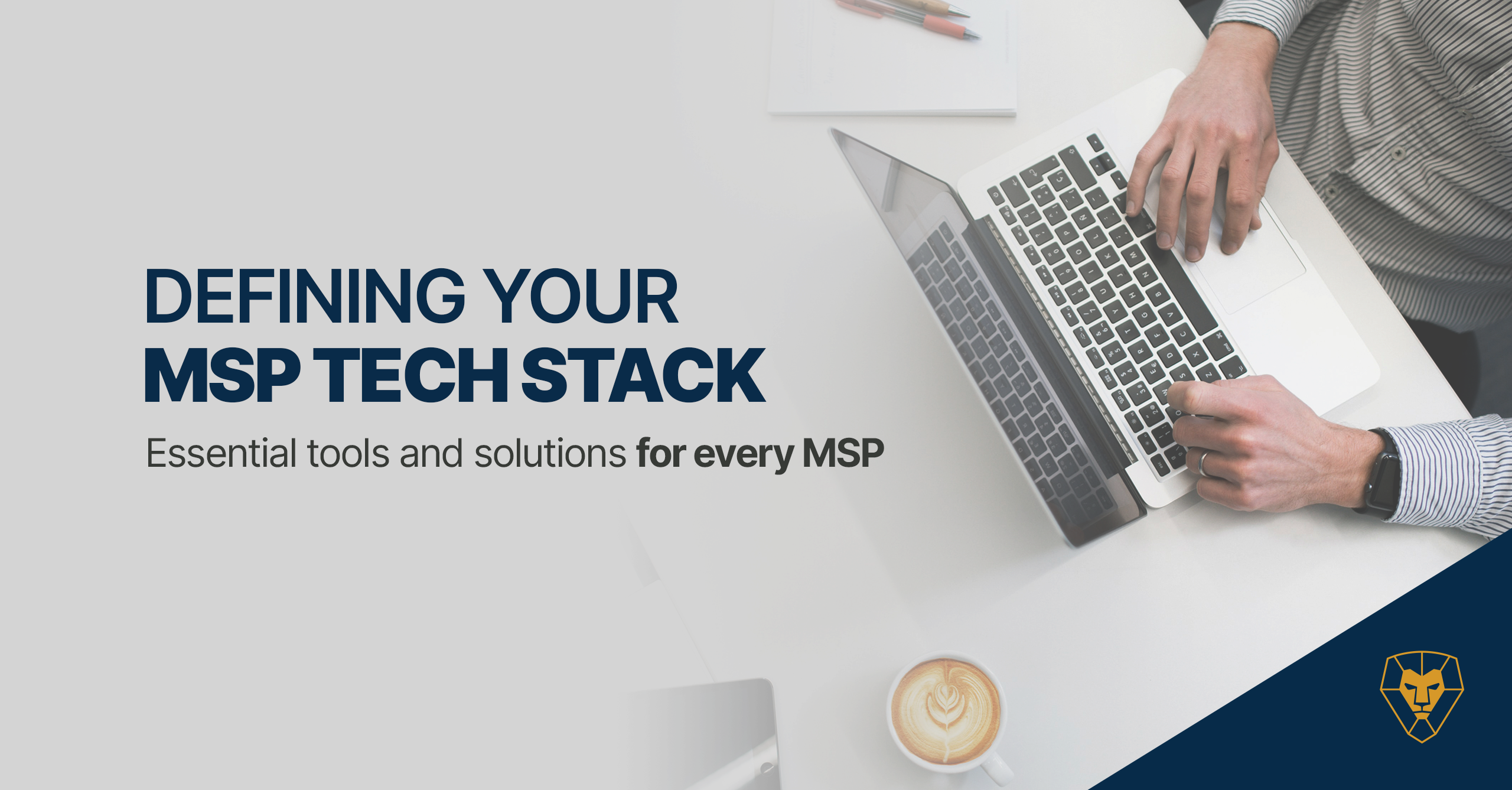
Essential tools and solutions for every MSP
For managed service providers (MSPs), it’s all about the tech stack. Having the right tools helps you get jobs done correctly, and can set you up for future success. But with so many tools out there, where should you start? We’ve put together a list of some of the most common tools that make up an MSP’s tech stack. How does yours compare?
Professional Service Automation (PSA)
Professional services automation (PSA) tools help MSPs more easily manage projects and resources across customers. PSAs help streamline billing, reporting and customer management processes across your entire organization, by providing a central location to view systems data, tickets, alerts and more.
Remote Monitoring and Management (RMM)
Remote Monitoring and Management (RMM) tools allow you and your techs to remotely log in and monitor users, systems and devices all in real-time. In today’s world of “work from anywhere” remote access is necessary—you can’t always send your techs to wherever your end users are.
Disaster Recovery and Backup
Disaster recovery and backup are also essential tools in the tech stack of any successful MSP. Disaster recovery and backup helps protect your customers—and mitigate any damage or data loss—from incidents like cyberattack, accidental deletions, power surges or physical damage to servers.
Documentation
Network documentation may not be the most glamorous part of your business, but it is necessary to keep information flowing from user to user. No matter how many end users your company manages, it is important to have visibility into the hardware and software of their computer networks. Documentation tools allow you to automate monitoring of systems and user documentation, set up alerts, and streamline your internal processes.
Security
Today’s IT landscape is chaotic and complex and, if you’re like most MSPs, your security and other data are scattered throughout different apps and programs, each with its own portal and its own reporting. You typically have to look at each system customer by customer, making it almost impossible to manage efficiently. A lot of the time, MSPs try to tackle the problem with more techs, but this can negatively impact revenue. But the reality is, you have to have full visibility and reporting into these systems, and you have to know how they are configured so you can protect them.
You need to know when system changes are made, and when you’re managing IT at scale, all the disparate systems can create a security headache, not to mention an exhausted engineering team. Let’s face it. The days of the traditional network perimeter and siloed security are gone. We know what works and what doesn’t, and what doesn’t work is doing manual discovery and documentation of all your systems. Your systems audits need to be frequent, comprehensive and scalable so that you’re prepared for attacks whenever they occur. What does work is automation and data unification that enable you to continuously detect potential risk exposures in your customer’s security posture.
Help Desk
On the surface, MSPs are in the business of IT management and security. But the core of an MSP’s offering is customer service. Help desk tools standardize workflows and processes, prioritize customer issues and help your techs deliver a superior level of service. Help set your team up for success by choosing tools that provide full visibility and automation—these will eliminate manual work for your team, saving time and allowing them to focus on resolving critical issues and growing customer relationships.
Account and Customer Relationship Management
The right account and customer relationship management (CRM) tools provide data-driven insights that allow you to reduce onboarding time, improve job quote and pricing accuracy, better manage costs and billing, and perform comprehensive assessments of your customers’ systems that increase your MSP profit margin. Your CRM solution should include things that make your life easier, like automated audits for streamlined billing reconciliation and customer reports for identifying upselling opportunities.
Virtual CIO Software
For today’s MSPs, a combination of technical expertise and strategic insight is critical to demonstrating your value, building client relationships and closing new business. With the MSP landscape becoming more saturated, providers looking to demonstrate value to their customers are adding virtual Chief Information Officer (vCIO) services to their offering. The actualization of “less service and more strategy,” vCIOs are trusted advisors focused on helping customers meet their strategic goals. VCIOs are focused on helping their customers achieve goals by providing advice and best practices about technology, resources and personnel. VCIOs need solutions that help them deliver reports, develop technology roadmaps and recommend tech upgrades or cost-savings opportunities.
The road to positioning your MSP as a vCIO starts with understanding your customers and their needs. A personalized customer experience, from prospect to onboarding and beyond, is crucial to developing a partnership with your customers that extends beyond managed services to strategic initiatives.
Unified Visibility
Between end user support, security and change management, teams are spending more time than ever managing customer issues. MSPs need solutions that provide full visibility into customer systems and allow them to standardize, secure and scale across their entire business.
MSPs need a solution that surfaces important information automatically, so they can spend less time digging for data trying to identify the cause of an issue, and more time focusing on customers and solving issues. Liongard’s unified visibility platform gives you 18 months of historical data that allows you to zero in on common root causes of issues so you can quickly find and view the data you need, without having to spend time on a discovery with your customers.
Learn how automation and unified visibility can transform and consolidate your tech stack. Schedule your platform walk-through today.